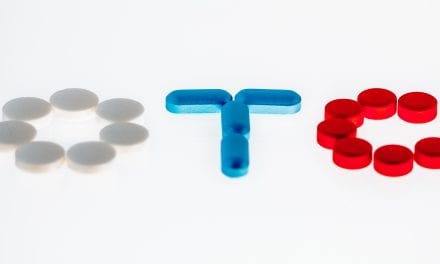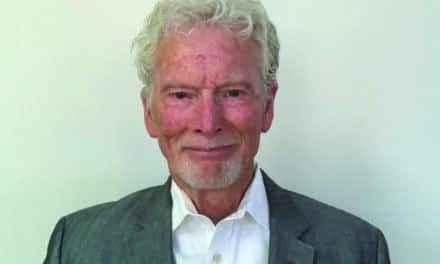By Chelle Wyatt, Podcaster
Hearing loops were my preferred assistive listening system for many years. The sound was clear and delivered right to my hearing aids. When in looped meeting rooms or venues, I can skip the pick up and drop-off of receivers, saving time standing in lines. Cody Hall, the Listen Technologies Listen Everywhere product manager called this BYOD (Bring Your Own Device) for hearing loss on our podcast together in February and I love that! Being a hairdresser in my previous life, I’ve always worried about picking up devices, like infrared headphones, wondering if they were properly sanitized before putting them on my head. Of course, I had no choice if I wanted to hear. With the hearing loop, my hearing aids were my BYOD.
I have a living room loop with a wire put up around the ceiling of the room because we couldn’t do it around the floor. There’s a small hum because of metal interference in the house. I have to tilt my hearing aids up on top of my ears to pick up the signal better. When I walk out of the living room, there’s a huge hum and I lose all sound; you could say I’m “boxed in” because I’m limited to staying in the room while watching TV. I was only using the loop system to watch live TV when captions are far behind.
Listen EVERYWHERE Really Lets Me Listen Everywhere
A few months ago, Listen Technologies introduced me to Listen Everywhere (LE) which streams audio over Wi-Fi. My husband hooked it up to the TV and I now have sound without the hum or awkward placement of my hearing aids! Unfortunately, I have 7-year-old hearing aids that aren’t Bluetooth capable which bums me out because that would deliver even better sound. They are 7 years old, so I use my neck loop plugged into my phone in combination with my telecoil.
Originally, I planned a “listening” party with the Listen Everywhere, inviting several of my friends with hearing loss who wear hearing aids and cochlear implants over to try it out. Omicron shelved that idea for another few months. I did invite one friend over who has Bluetooth hearing aids to test it. She really liked it, saying the sound was very clear and better than her living room loop as well. She’s not a “techie person” so she was very happy to download the app and be able to hear without any extra steps.
What’s really nice is that I can go to the fridge in the basement to get a soda and still hear the movie. I chopped vegetables in the kitchen listening to the news, hearing it well enough that I could argue with the newscaster. I went out to the chicken coop to collect eggs and could still hear the movie. I was watching one of the Star Wars movies earlier, lamenting the fact that I could not hear some of the music I remembered and other little intricacies. Duh! I forgot to set myself up with the LE. After I connected, I heard what I wanted, and some sounds I didn’t even know were there.
No Detectable Latency
I use captions 100% of the time on TV. With profound, high-frequency hearing loss, I am always missing certain sounds of speech, even with my hearing aids. I am a good lip reader, having taught classes for many years. Captions are often far behind on live TV, so I use assistive listening and my lip-reading skills to keep up (as long as the people speaking are facing the camera). Latency can be difficult for those with hearing loss because, whether we know it or not, we’re all wired to lipread somewhat. It’s important for us to have the lips match up with what we can hear. Latency can be an issue because if it isn’t matching up, our minds get blown. We can’t lipread or hear when that happens. When I use my neck loop with the LE, I can’t detect any latency.
Having experienced this new system, my first thought was how easy it would be to convince venues and public places to install Listen Everywhere to help those with hearing loss. We worked hard with Loop Utah to try to get loops into venues, but the cost of the installation was always the biggest factor. With LE, it could be a lot easier to get venues to update their systems since there is no permanent installation of any wires. This would be absolutely wonderful in airports where I do not hear any announcements at all. I was happy to hear another person with hearing loss echo my thoughts at another state Hearing Loss Association of America (HLAA) meeting where Listen Everywhere was introduced.
Technology Keeps Me Connected
In 2007, after my last big drop in hearing, the audiologist told me there weren’t any more powerful hearing aids than the ones I had. Technology advanced a few years later, and I had new hearing aids again. The same thing happened again in 2014: better hearing aids. Speech-to-text apps came out and improved, just in time for the pandemic. Haptics improved helping me feel the environment around me. Now assistive listening is updated with LE. Technology keeps me connected, and I’m deeply grateful for that.
There are 48 million Americans with hearing loss. Assistive listening technology is still not recognized by many of those people, nor do they know that hearing aids have limits, such as they work best within six feet. Amplified sound isn’t enough and assistive technology steps in to fill the gap. Many don’t recognize the ALD symbol, and I find this sad. This technology keeps us participating in society. Technology makes us feel included and welcome.
Assistive Technology, New Strategies, and Self-advocacy
I started Hearing Loss LIVE! with a couple of other friends because we wanted to help fill the knowledge gap in society, shore up misconceptions about hearing loss, and promote accommodations. There are still too many people who don’t get anything other than a pair of hearing aids. Hearing aids alone do not make one successful with hearing loss; we need to know about accommodations/technology, new strategies, and self-advocacy. People don’t get the full rehabilitation they need unless they are lucky enough to wander into support groups. We are working on ways to change that.






